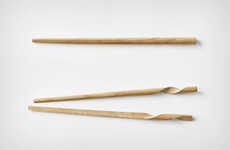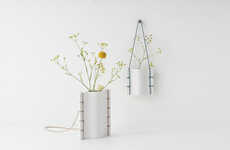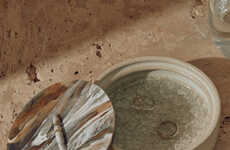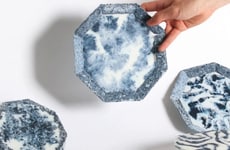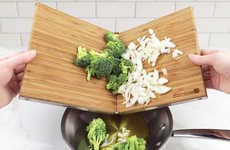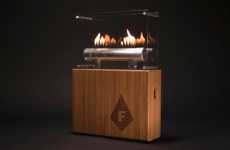
These Chopstick Rests by Tomomi Kamoshita are Made of Found Items
Michael Hemsworth — June 13, 2016 — Art & Design
References: rittau.jimdo & spoon-tamago
Using the traditional Japanese method kintsugi to repair ceramics, Tokyo-based potter Tomomi Kamoshita created these chopstick rests using found pieces of ceramic materials.
The creations from Kamoshita turn what might be interpreted as waste into a rather beautiful piece of artwork that creates a story from something quite simple.
Kintsugi is the process of repairing ceramics by using gold to fill the space between them rather than try to hide the crack. This accentuates the break and enhances the aesthetic of the piece to be more focused on repair and not forgetting the past.
The chopstick rests by Tomomi Kamoshita are beautifully ornate and are set to be on display in New York at the Ronin Gallery from June 23rd to July 30th, 2016.
The creations from Kamoshita turn what might be interpreted as waste into a rather beautiful piece of artwork that creates a story from something quite simple.
Kintsugi is the process of repairing ceramics by using gold to fill the space between them rather than try to hide the crack. This accentuates the break and enhances the aesthetic of the piece to be more focused on repair and not forgetting the past.
The chopstick rests by Tomomi Kamoshita are beautifully ornate and are set to be on display in New York at the Ronin Gallery from June 23rd to July 30th, 2016.
Trend Themes
1. Reclaimed Ceramic Art - Incorporating found materials to create unique and sustainable ceramic art pieces.
2. Kintsugi-inspired Design - Using the traditional Japanese technique of kintsugi to create art and design that celebrates imperfection and repair.
3. Upcycled Tableware - Transforming discarded ceramics into new and innovative tableware designs that promote sustainability and eco-friendliness.
Industry Implications
1. Art - Opportunity for artists to incorporate sustainability and eco-friendliness into their work by utilizing reclaimed materials and kintsugi-inspired design.
2. Tableware - Potential for tableware companies to incorporate upcycling and reclaimed materials into their product lines, and leverage the trend towards sustainability in consumer preferences.
3. Home Decor - Opportunity for home decor companies to offer unique and sustainable ceramic art pieces that incorporate found materials and kintsugi-inspired design.
1.3
Score
Popularity
Activity
Freshness



